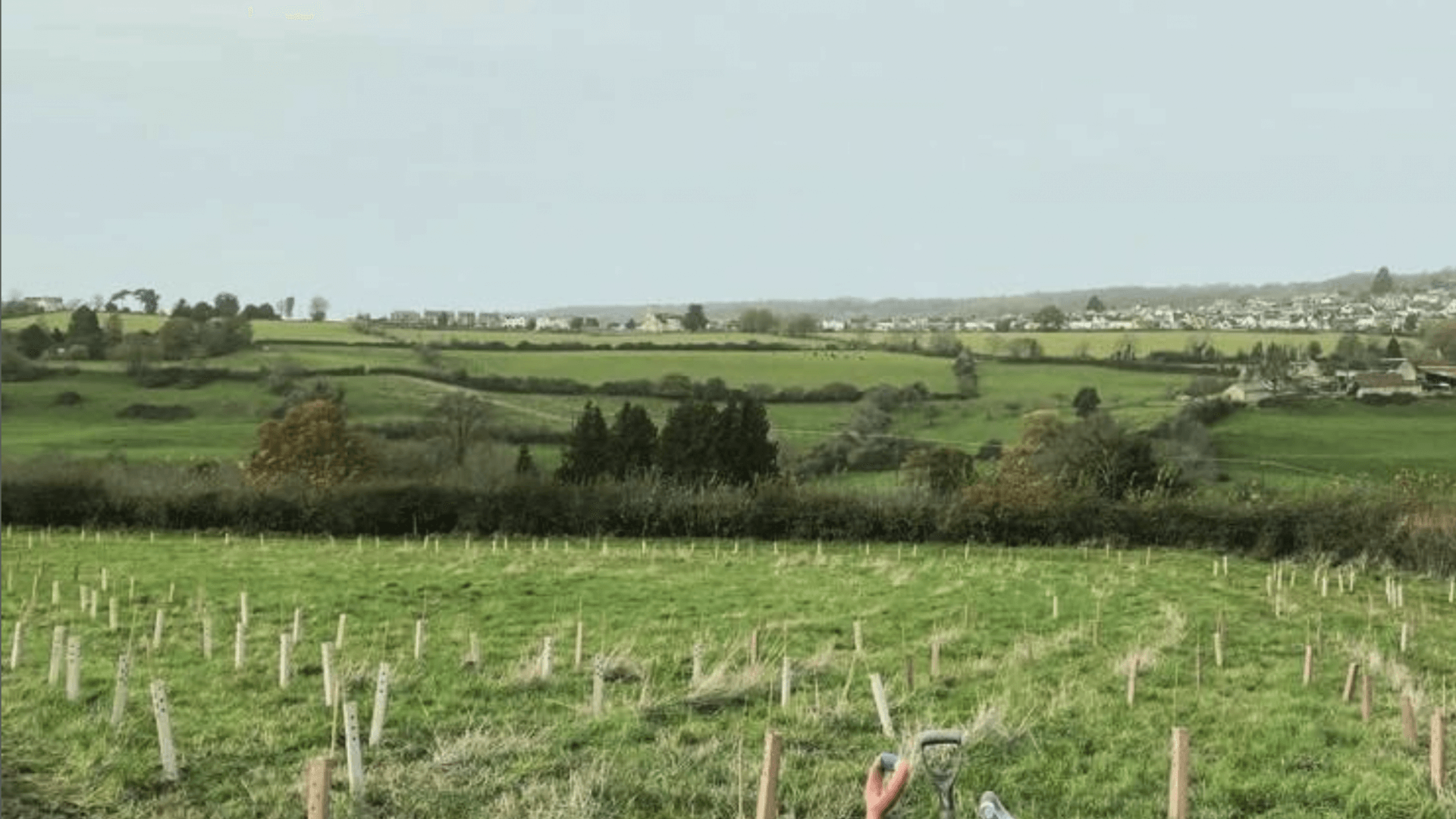Way back in February last year, we wrote about our emerging plans for establishing new agroforestry systems here at Hammonds Farm. Since then, we have planted hundreds of fruit and nut trees on around 20 acres of land. Which, it turns out, is a good deal easier to say than it is to actually do!

Working from the basic design concept Eric and Emma had created, we started getting into the details, and came up with two and a half agroforestry systems we wanted to plant over the winter. Each one is based around nuts as a protein food, combined with fruit for diversity. One of the key debates was whether we should go for more diversity, and more different systems, with the aim of learning quicker and building more resilience into the systems, or whether we should start smaller and simpler so as not to get overwhelmed.
I guess the answer is that we’ve hedged our bets somewhat. Our walnut, pear and soft fruit system packs in a lot of complexity, with around 20 different varieties of seven different crops, plus four different approaches to managing weeds in the tree rows. After that we felt our heads might explode, so our first cobnut system just integrates alternating rows of cobnuts and plum trees. And the half-a-system? So far that’s just cobnuts, but with space between the rows for alternating rows of something else in future, possibly soft fruit on wires and fences.

Next came another round of questions and research. Where can we source 400 cobnut trees, and what varieties are available? Are we really sticking to our plastic free commitment on mulch matting? What about keeping the deer out? Will we need irrigation? And who sells organic soft fruit plants?
It turns out that none of this is straightforward to navigate. There is almost no one producing larger quantities of walnut or cobnut trees in the UK, and none organically certified. It’s almost impossible to buy organic soft fruit plants too. Protecting trees from deer without making the trees inaccessible to humans isn’t easy, but our solution of semi-permanent electric fencing run on solar powered energisers seems to be working reasonably well so far. And whilst we did stick with our no-plastic-mulch approach, this actually left us with only one longer term mulch mat product on the market that we could be confident was GM-free.
Another entertaining hurdle on our path to agroforestry glory was measuring and marking out our new tree rows on maps and in the field. Athene and I probably spent hours on this, walking up and down the hilly fields through waist high grass, wielding tape measures and notebooks and bamboo canes, with not a right angle in sight, then back in the office hunched over maps, puzzling over scales and row lengths.

Eventually, after designing our system, choosing our varieties, putting up fences, marking out rows, and sourcing our plants, we were left with the easy part of the job – planting them! Over the course of a few months last winter, we got pretty slick at production line style planting. With all hands on deck, sometimes in the snow, we put in 24 walnut trees (in addition to 28 planted the year before), 52 pear trees, 28kg raspberry root, 176 gooseberry plants, 88 blackcurrant plants, 88 redcurrant plants, 70 rhubarb crowns, 56 plum trees, and around 450 cobnut trees.
And the story doesn’t stop there. Every tree has also been mulched with woodchip to help retain soil moisture, suppress weeds, and slowly build fertility. We’ve been grateful for the wet summer while we’re still working on installing a drip irrigation system in the walnut field, and in order to keep track of all these trees and fruit bushes we’ve tagged them all using the Sectormentor app.
So far so good. We’ve had a pretty good survival rate across the board, except in the raspberry root which barely showed up at all. Most of the plants look healthy and we may even get a handful of cobnuts to pick this autumn. Somewhere in all the measuring and plant ordering I missed a whole row of plums trees, and a few cobnuts, so we have a little more planting to do this winter. Our first attempt at grazing the cows between cobnut rows went smoothly, but there’s probably more work to do before we bring livestock into the walnut or plum areas.
It’s going to be a while before we have a mature food forest dripping with fruit and nuts, but the shape of what we’re doing is now clear to see. We’ve already learned a lot, and we’ve only just started the journey.


